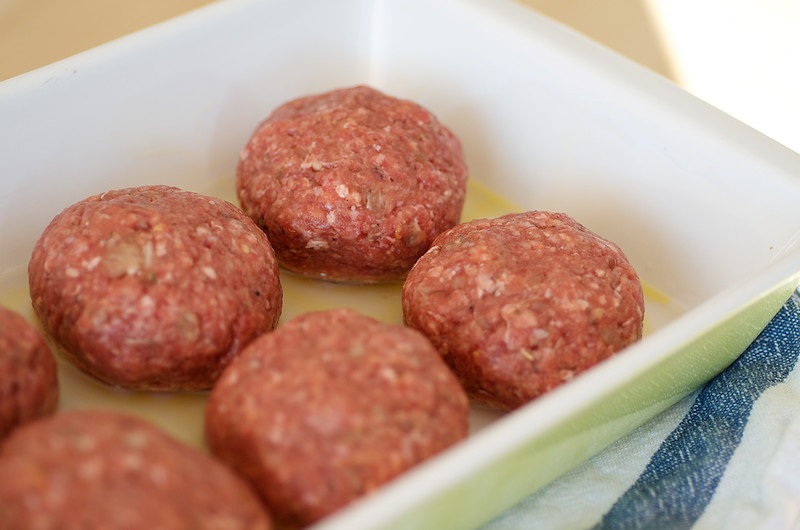
Venison meatballs
A simple baked meatball recipe that works great with venison
This recipe will make a heap of tasty meatballs that can be enjoyed on their own, on pasta, or on a meatball sub. They freeze beautifully, so consider doubling the batch and freezing half for later!
Ingredients
- 2 lbs (907 g) ground venison
- 1 medium onion, diced
- 1 cup rolled oats
- 2 eggs
- 1/2 cup milk
- 2 tablespoons ketchup or barbecue sauce
- 1 teaspoon garlic powder
- 1 tablspoon Italian seasoning
- Pinch salt and pepper
Directions
- Preheat oven to 400F, and cover baking sheet in parchment paper.
- Beat eggs and milk together in a large bowl. Add all of the remaining ingredients; ground venison, onion, rolled oats, ketchup and seasoning. Mix well.
- Shape meat mixture into small balls, around 1 1/2 inch wide. Lay out on baking tray so that they're at least 1/4 inch apart.
- Bake meatballs until no longer pink inside, around 20 minutes.
Tips
- If cutting onions makes you cry easily, try chilling or freezing the onion in advance, and cutting it up near the oven vent fan.
- You can pan fry these meatballs instead of baking them if you prefer. Heat about a tablespoon of oil in a pan, and cook the meatballs until browned on all sides and no longer pink in the middle.
Variations
- You can make these meatballs with any ground meat. Lean ground meat is preferred; very fatty meats will produce a lot of grease on the baking sheet in the oven.
- Swap instant rice or breadcrumbs for the rolled oats in this recipe.
- Add 1/2 cup dry parmesan cheese to the meat mixture for extra flavour.
Storage
- Keep in sealed container in fridge for 3-4 days.
- To freeze, cool meatballs completely and then transfer into an airtight container or freezer bag. Keep for 3-4 months.
Recipe adapted from Iowa Food Bank

